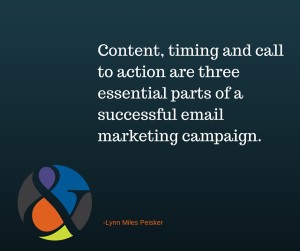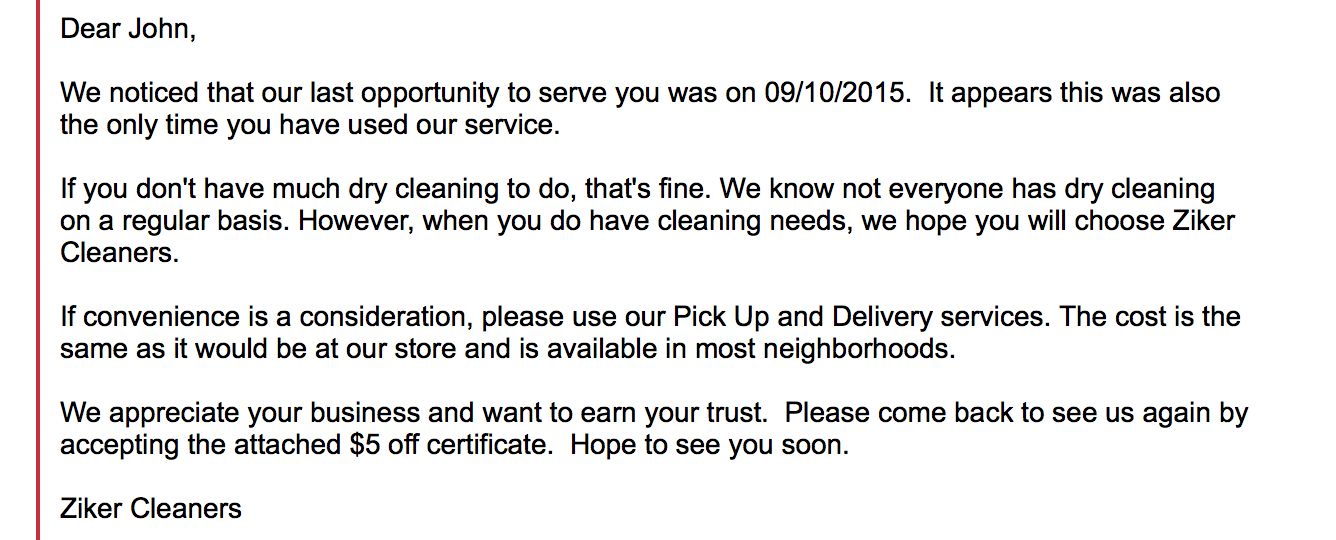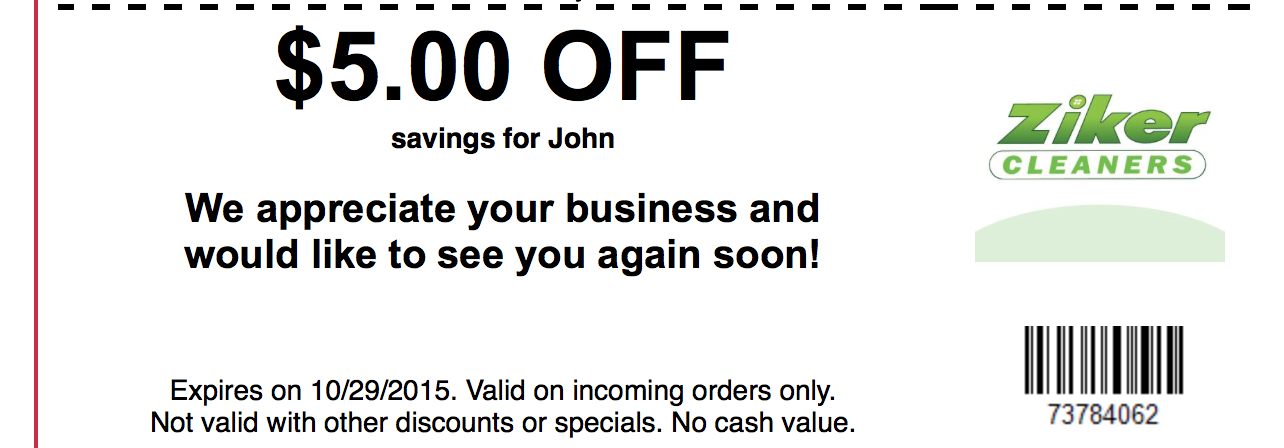Content, timing and call to action are three essential parts of a successful email marketing campaign. Even if you have one or two but not three, then your message will fall flat.
- Good email marketing content is relevant to the recipient.
- Good email marketing is timely with regard to your previous interactions with the recipient.
- Good email marketing has an effective call to action that is easy for the recipient to act upon. It can also provide results that can be easily measured.

My husband and I moved to a new city earlier this year. New cities mean plenty of opportunities to try out neighborhood businesses. We always choose to shop and eat local first, knowing that we have the chains and big box stores to fall back on if what’s nearby doesn’t measure up. I’m happy to say we’ve found lots of great “mom and pop” options here.
One of those is a locally owned dry cleaners. We don’t use dry cleaning much, maybe one small batch a month. When my husband took a few things to a provider near our home recently, he found himself on their follow up email list. It was such a good example, I’ll use it here to demonstrate those three principles for your next email marketing campaign.
Let’s start with the subject line:

This is clear, concise, and specific and it grabs the reader’s attention with relevance. Dry cleaning is a relatively low cost, transactional business so they offered an amount, enough to make it worth it for the customer to return. Also, they know that we have only used their business once, so they are still trying to make a customer for life out of us. Coupons are perfect in this use and situation.
Let’s move on to the body of the letter:

- This email uses some mail-mergey type customization for name and date and frequency of use for the customer served. This is great, but only when it works! They used my husband’s first name correctly. They were able to pull out the date he last visited, and again, stated it correctly. And they know he’s only been there once. If you can’t get this right, and by right I mean perfect, don’t use customization. An email with no personalization is much better than an email that is incorrectly personalized.
- They acknowledge in a friendly conversational tone that he may not need their service. There is no hard sales pitch here.
- They draw his attention to another option. An infrequent customer for a dry cleaner may just be too busy to get by the shop, and so offering the pick up and delivery service makes sense. This seems thoughtful and logical to the reader and not an “upsell.”
- They understand that they have not yet earned the trust of a one time customer. We’re not friends yet, and so they don’t act like it. They are being polite and sounding earnest.
Finally, the coupon and call to action:

- It’s personalized accurately.
- It expresses appreciation.
- It’s a significant amount in dollars off, considering our first and only expenditure was under $20.
- It’s scannable so they can record effectiveness. You can only improve what you choose to measure and reward.
- “Valid for incoming orders” is important here. They want more business from us, not to thank us for business we’ve already given.
By the way, the coupon had a short turn-around time for expiration, just two weeks after issue. In this case, that’s a good thing. The dry cleaners know that if we try some where else before we go back to them, in a transactional, occasional use business, they’ve likely lost us.
My husband took this coupon on his phone – the other good reason for scannability – that very day and took about $6.00 worth of shirts to this provider. They served him well, and we’ll be back.
It’s a great piece of email marketing. It’s relevant to the customer. It arrived at just the right time. And it contained an easy-to-use compelling call to action.
By the way, the only thing I didn’t like was, ironically, this:

Please, I beg of you, stop the shameless begging with regard to your social media likes and follows. Pretty please. Just. Stop. Begging.
See what I did there. It’s not pretty, is it?
